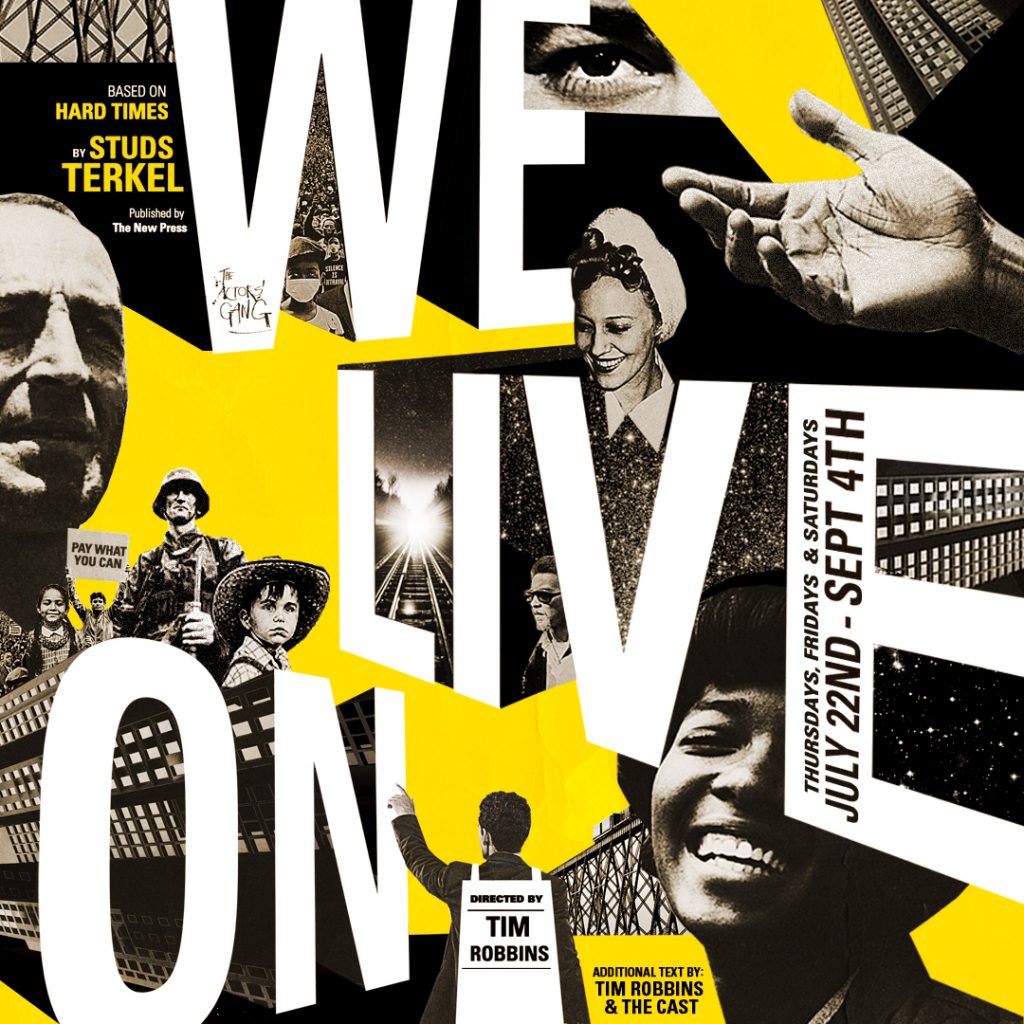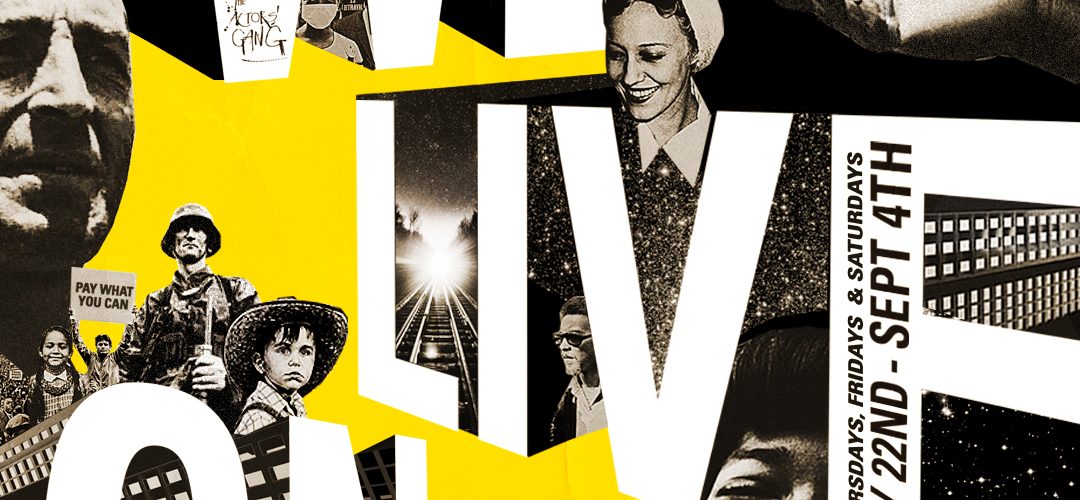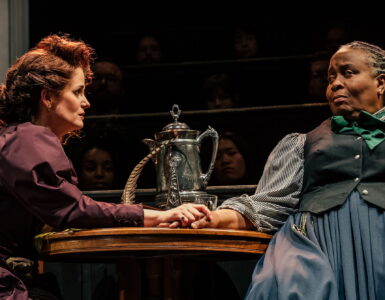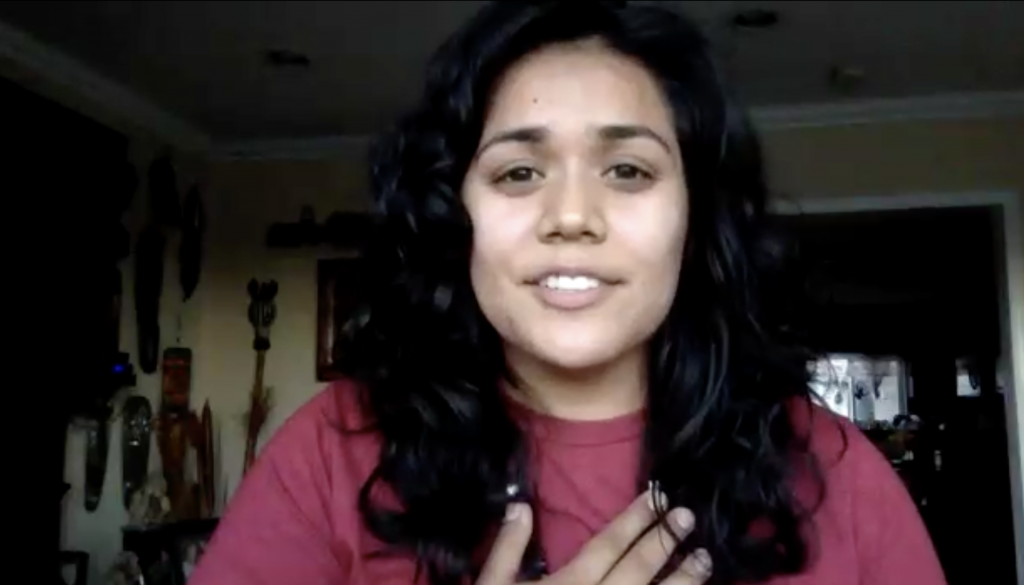
In 1970, journalist Studs Terkel released his book, Hard Times: An Oral History of the Great Depression, in which he interviewed people about living through that desperate time and how they made it through. There are certainly parallels between that time and our own, from the existential terrors of the pandemic to the war waged by the rich and powerful against everyone else. To make this point, The Actors’ Gang theater company is presenting We Live On, an adaptation of Terkel’s book with additional personal stories from cast members. The material is certainly compelling, and the talented actors bring it to life, but some perplexing decisions about the show’s format and its ponderous four-hour length somewhat limits the production’s appeal.
Photo above—Stephanie Galindo as Anonymous. Production photos all credited to The Actors’ Gang.
The play is divided into three parts, featuring accounts from ten different people. They don’t seem to be arranged thematically, so I’ll just mention highlights from each part. Louis Banks, who wanted to get work as a chef, instead ended up as a hobo, riding the rails and being victimized by cops and railroad security, who arrested men such as him just to get free labor. He remembers seeing people killed in fights over sums as low as fifty cents. Jeronimo Spinks brings a weary humanity to his portrayal of Banks. Harry Hartman worked as a repo man for banks and businesses, sometimes taking the kitchen furniture away from families while they were eating dinner. He isn’t completely unsympathetic, however, and also speaks of trying to help the people he could. Vincent Foster is convincing as the gruff Harry. Stephanie G. Galindo, whose righteous anger fuels what is the most powerful segment, recounts the plight of migrant workers who died during that time and were buried in anonymous graves. In one example, many workers died in a plane crash and had one nameless marker until a professor researched their identities, and today a larger marker commemorates them all by name.
In Part 2, Sally Rand, who’d worked in silent films and vaudeville, finally saw success as a dancer. After a publicity stunt where she attended a snooty party riding a horse as nude Lady Godiva, she (with her much-imitated fan dance) became one of the highest-paid performers of the 1930s along with Mae West. Patti Tippo’s humorous delivery aids lines from Sally such as: “I haven’t been out of work since the day I took my pants off.” Mariana Da Silva presents the history of National Farm Workers Association (later the UFW) co-founder Dolores Huerta. She laments that Mexican-Americans (such as herself) were never accepted no matter what they did, and was spurred to action when she realized that the degradation of migrant workers by their employers was a deliberate tactic to demoralize and control them.
Part 3 features Peggy Terry’s memory of visiting a Hooverville camp, where people were living in rusted-out cars and seeing a family with children living in an empty piano box. Bob Stinson tells of a successful factory strike he participated with in Flint, Michigan, in which disaster was averted by a women’s brigade forming a human chain around the factory to prevent cops and strikebreaker thugs entering to beat the strikers. Perhaps the only outright villain of the show is the “crass and oblivious” Dr. David J. Rossman, a psychiatrist who benefitted from his rich clients giving him stock tips, allowing him to ride out the Depression with ease. He’s bragging about his financial deals when Terkel asks him, “What was happening to humans?” Megan Stogner tells his tale with deadpan panache, allowing the Terkel line to land with the moral gravity it deserves. The show ends with selected sections of Langston Hughes poems. Cyrus Roberts gives an impassioned performance of “Let America Be America Again,” which adds an inspirational note towards the end of the play.
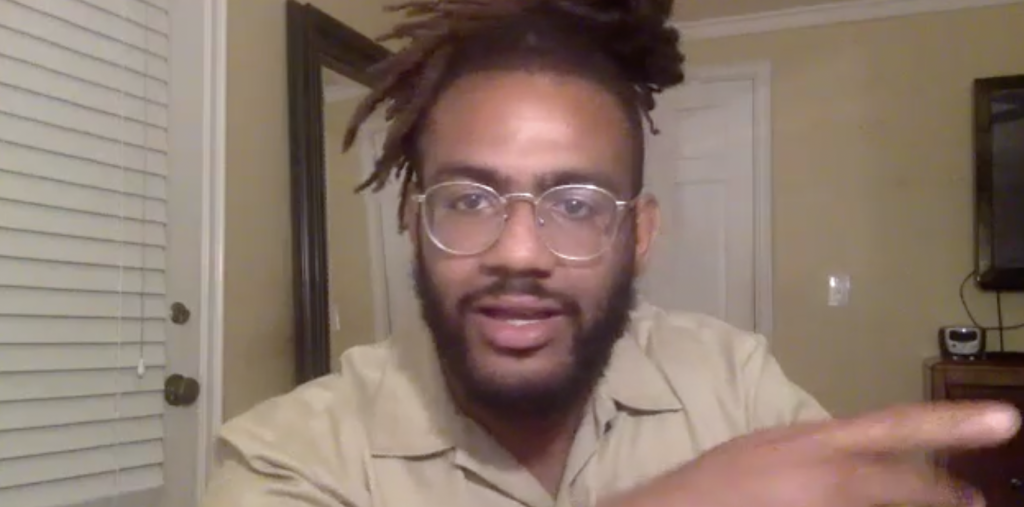
It’s difficult to determine the extent of the company’s artistic director Tim Robbins’ direction here, because this is an untraditional show in some ways. Certainly his guidance of the actors is successful – there isn’t a bad performance in the bunch, and many are inspired. But there is no set, no staging or anything other than basic lighting. Instead, we watch thirty actors sitting alone in rooms, talking to the camera. This robs the production of theatricality or visual interest, making it an unfortunately static experience. It’s a mystery as to why the Gang decided to make this a live event that one mainly needs to watch on specific dates and times (although the recorded version is available on Sundays). If it was a production where all the actors were on a stage together and interacting, that might make sense, but instead it’s a Zoom show, where its being live offers no perceivable dividends. Finally, and most importantly, it’s four hours long. That’s a lengthy runtime for any show, even a theatrical extravaganza, but for a Zoom show it’s deadly. If there truly had been many different kinds of stories to present, that would have been more acceptable, but a lot of the histories here are very similar and some serious editing would improve the show’s focus and impact considerably.
The production features many historical photos to illustrate various points (“4 children for sale – inquire within” is fairly shocking), and it ends with modern photos of civil disobedience. This brings the valuable message that people working together against oppressors is a solution that people used to weather the Great Depression and that we can and should use now.
We Live On is an interesting production that has its heart in the right place that perhaps doesn’t work as well as it might in its current configuration.
We Live On, presented by The Actors’ Gang, is streaming through September 4th.
Hard Times is being offered to the public with a pay what you can admission. Tickets are available at www.TheActorsGang.com
We Live On
World Premiere
Based on the 1970 Hard Times by Studs Terkel
Published by The New Press
With additional text by Tim Robbins and The Cast
Directed by Mr. Robbins
A Live Virtual Production
Performed in 3 Parts.
From the press release:
About We Live On. At The Actors’ Gang Theatre, artistic director Tim Robbins, has created a new, virtual play We Live On, based on the 1970 book Hard Times by Studs Terkel. Terkel interviewed businessmen, auto workers, farmers, hobos, strip tease artists, repo men, seamstresses, and labor leaders and asked them what it was like to live through the Great Depression – and their words of survival have a direct link to the today.
The production explores 30 different stories over three parts — a mix of stories documented by Terkel and original stories from the family history of cast members (with additional text by cast members and Robbins) – a testimony of what it takes to survive unprecedented times.
Robbins said, How do we, as artists, address the fear of this time, the loss, the desperation, the poverty? About a year ago, The Actors’ Gang started working via zoom to adapt Terkel’s Hard Times on its 50th anniversary,
Studs Terkel, such an important documentarian of the human condition, has always been a hero of mine, who gave voice to the anonymous, the forgotten. it was essential to tell the stories of survivors, knowing that the courage and resilience of those that made it through the Great Depression could provide inspiration and hope for our audiences today.
It is our hope to create that community throughout the world with our audiences in an intimate, personal and immediate way.
Hard Times is being offered to the public with a pay what you can admission.
